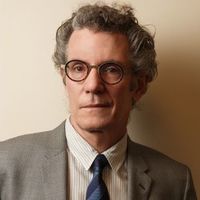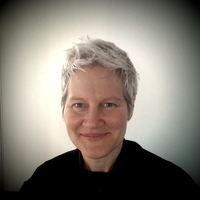Studio R-A
Bill Brown (University of Chicago, Department of English) and architect Ted Brown (Syracuse University, School of Architecture) embark on a collaboration that seeks to explore theoretical, practical and formal dimensions of re-assemblage. To initiate this collaboration, the Brown brothers will co-teach a course that is both seminar and studio based, working with students from diverse backgrounds of study, and bringing in other working artists to offer their insights on various notions of re-assemblage.
 Bill Brown
Fellow
Bill Brown
Fellow
 Ted Brown
Fellow
Ted Brown
Fellow
 Ann Hamilton
Ann Hamilton
Bill Brown
In the past, my research has focused on popular literary genres (e.g. science fiction, the Western), on recreational forms (baseball, kung fu), and on the ways that mass-cultural phenomena (from roller coasters to Kodak cameras) impress themselves on the literary imagination. Rather than assuming that historical contexts help to explain a particular literary text, I assume that literature provides access to an otherwise unrecuperable history. In other words, I believe that the act of literary analysis (including formal analysis) can become an "historiographical operation" all its own.
More recently, I have worked at the intersection of literary, visual, and material cultures, with an emphasis on what I call "object relations in an expanded field." I askhow inanimate objects enable human subjects (individually and collectively) to form and transform themselves—and indeed how objects andsubjects transform oneanother. I tried, in a piece called "Thing Theory," topoint out how things and thingness might become new objects of critical analysis.In Other Things—focusingsuch analysis through‘The Matter of Modernism,’ ‘Unhuman History,’ and ‘Kitsch Kulchur’—I engage a very wide range of work: Bergson, Bachelard,Arendt, Latour; Homer, Virginia Woolf, Philip K.Dick, Shawn Wong; Man Ray, Spike Lee, Dan Flavin, Brian Jungen. Dislodging the object-thing distinction from fundamental ontology (Heidegger) and from psychoanalysis (Lacan), I use it as a tool for apprehending the unanticipated force of an object, however banal that object may be.This is a new materialism within which the thingness of an object cannot be abstracted from the field of culture. Currently I’m at work on a project called “Re-Assemblage,” which asks how assemblage practices (across the literary, visual, and plastic arts) might contribute to assemblage theory in the social sciences.
Ted Brown
Ted Brown received a master of architecture degree from Princeton University and a bachelor of science in architecture from the University of Virginia. Prior to joining the faculty he taught at Princeton University and the Oregon School of Design. In 1987 he received the Rome Prize in Architecture and conducted research on early representations of the city. As a Fellow he returned to the American Academy in Rome in 1996 as a visiting architect.
Brown was chair of the graduate programs in the School of Architecture from 2002-2005. He currently teaches graduate and undergraduate design studios and seminars in contemporary theory on issues of architectural and urban form. He has lectured in the US and in Italy where he has served as the director of the Syracuse University Architecture Programs. In 2011 Brown received the Scholar/Teacher of the Year award from Syracuse University.
Brown’s current work with Martin Haettasch includes Berlin Journal: Tempelhof, Alternative Futures and studies on the compound urban block in the American City. In addition, he is partner in the practice, Munly Brown Studio, which conducts design research from the scale of the object to the scale of the city. The firm’s projects include the master plan for the Salt District Neighborhood Food and Health Center in Syracuse and the Childcare Campus for Syracuse University. In collaboration with the office of CLEAR, Brown has worked on two projects for the city of Syracuse addressing the future of Onondaga Creek. His funded research includes design of ‘optical’ concrete, design of a ‘high performance’ house design, and the re-conceptualization of vacant downtown office structures in the US.